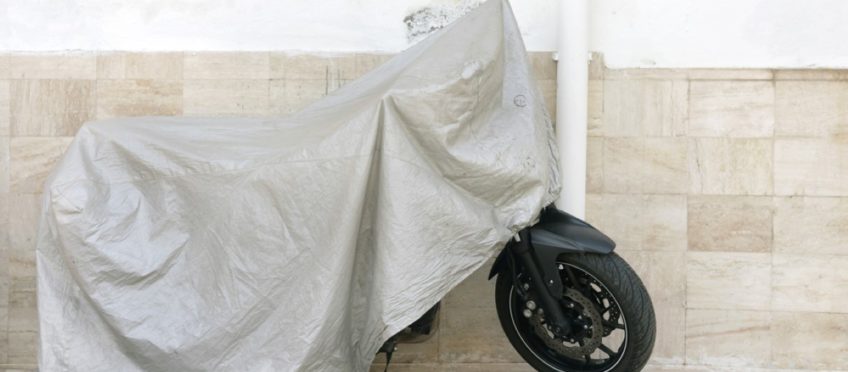With the warm weather we’re enjoying, it’s easy to get lulled into thinking riding season will last forever. However, the calendar tells us it’s October.
Winter will arrive so it’s time to think about preparing our motorcycles for hibernation. The tips below assume that will last four to six months. Weather conditions and your preferences for cold-weather riding can shorten or extend that.
Thorough inspection and care now saves time and money and can prevent unwanted surprises such as a dead battery or corrosion. It’s also an opportunity to plan for routine maintenance or upgrade projects during the winter so when spring arrives, you’re ready to go!
10 Tips for Winterizing your Motorcycle
- Get familiar with your owner’s manual. If you don’t have one, search for one from your local retailer, online forums, or Google. YouTube videos from credible sources are another great resource and can show you how to perform maintenance specified by the manufacturer.
- Clean your motorcycle. Thoroughly. Bugs splatter can permanently corrode paint. Wash it well with an automotive soap, apply wax, polish chrome, and make sure it’s thoroughly dry before covering it. Waxing paint provides a barrier against moisture and rust. Applying WD-40 (Water-Displacement, 40th formula) to metal surfaces displaces moisture and protects against corrosion.
- Fill your gas tank completely to prevent condensation. Ideally, do it about five minutes from home on your last ride. At the same time, add the recommended amount of fuel stabilizer, giving it a chance to circulate through the fuel system.
- If your bike is carbureted, your owner’s manual will likely advise you to drain the carbs. You can do this by running the engine with the fuel tap in the ‘off’ position until you effectively run out of gas. Change your engine oil and oil filter. If you plan right, you can do this upon arriving home after that last ride while the oil is still warm. While less of a problem than it used to be, oil can have contaminants in it that can damage your engine if it’s left to sit for extended periods.
- Lubricate moving parts. Any parts that need periodic lubing, need it before storage to discourage rust from forming. This includes mechanical clutch cables, fork surfaces, and pivot points like those on your side or centre stand. Clean your drive chain and dry it well before applying lubricant. Kerosene makes an excellent, inexpensive cleaner. While you’re there, check the chain and rear sprocket for wear.
- Check your coolant level. Remember water freezes and expands at 0°C. If your bike is water-cooled and you have inadequate levels of anti-freeze in your coolant system, you can end up with a cracked head.
- Elevate both wheels off the ground. Take the pressure off your suspension and tires by using the bike’s centre stand, a stand-alone product, or even carefully propping up the bike using blocks. If you’re unable to do this, the next best thing is to move your bike around every couple of weeks so tires aren’t sitting on the same surface for extended periods and developing flat spots.If tires are sitting on concrete, put a piece of carpet or plywood under them to prevent the transfer of moisture. Tires tend to lose air pressure when it’s cold so inflate them to the maximum recommended pressure to maintain their shape. Check them again in the spring before that first ride.
- Keep your battery charged. Inactive batteries can discharge over time, especially in the cold. Using a trickle charger keeps it fully charged while allowing you to leave the battery in the bike. Just clean the battery leads, attach the connections, and plug in the charger. I keep my leads on all year (the connection also works with some heated gear) and then just have to plug in the charger when it’s time. Another option is to remove the battery and place it on a charger.
- Block air intake and exhaust pipes with plastic bags, steel wool, or duct tape – anything to keep the critters out. One spring I discovered my air filter was full of sunflower seeds. Evidently it had been used as a dining room. Just make sure to remove the plugs before starting the engine.
- Cover your motorcycle with a quality cover. Not only will it protect it from dust, it can keep moisture out. If you store your bike outside, secure the cover well to prevent it from blowing loose in the wind.
A little planning, time, and work now makes a big difference in the spring. It means your motorcycle will be ready to ride as soon as you are.
Related article: Preparing Your Motorcycle For the Winter









join the conversation